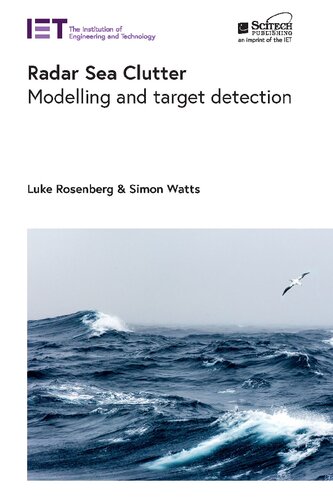

Most ebook files are in PDF format, so you can easily read them using various software such as Foxit Reader or directly on the Google Chrome browser.
Some ebook files are released by publishers in other formats such as .awz, .mobi, .epub, .fb2, etc. You may need to install specific software to read these formats on mobile/PC, such as Calibre.
Please read the tutorial at this link: https://ebookbell.com/faq
We offer FREE conversion to the popular formats you request; however, this may take some time. Therefore, right after payment, please email us, and we will try to provide the service as quickly as possible.
For some exceptional file formats or broken links (if any), please refrain from opening any disputes. Instead, email us first, and we will try to assist within a maximum of 6 hours.
EbookBell Team

5.0
68 reviewsThe first maritime surveillance radars in World War II quickly discovered that returns from the sea, soon to be known as sea clutter, were often the limiting factor when attempting to detect small targets while controlling false alarms. This remains true for modern radars, where the detection of small, slow moving targets on a rough sea surface remains one of the main drivers for maritime radar design, particularly in the development of detection processing.
The design, development and testing of radar signal processing for maritime surveillance requires a very detailed understanding of the characteristics of radar sea clutter and of the combined target and clutter returns. This book provides an updated and comprehensive review of the latest research into radar sea clutter and detection methods for targets in sea clutter. The emphasis is on understanding the characteristics of radar sea clutter as observed with different radars, viewing geometries and environmental conditions. This understanding is assisted by the development of mathematical models that are used in the radar design process.
In recent years there has been an increased interest in operating at higher altitudes, resulting in the sea surface being illuminated with larger grazing angles than used in traditional airborne surveillance platforms or ground-based systems. There has also been significant research into bistatic operation, including passive radars using illuminators of opportunity. The use of coherent and multi-aperture systems in maritime radar are also of increasing interest and these new application areas are also covered in this book.